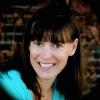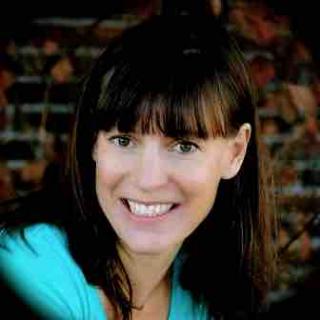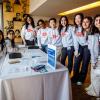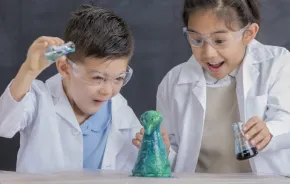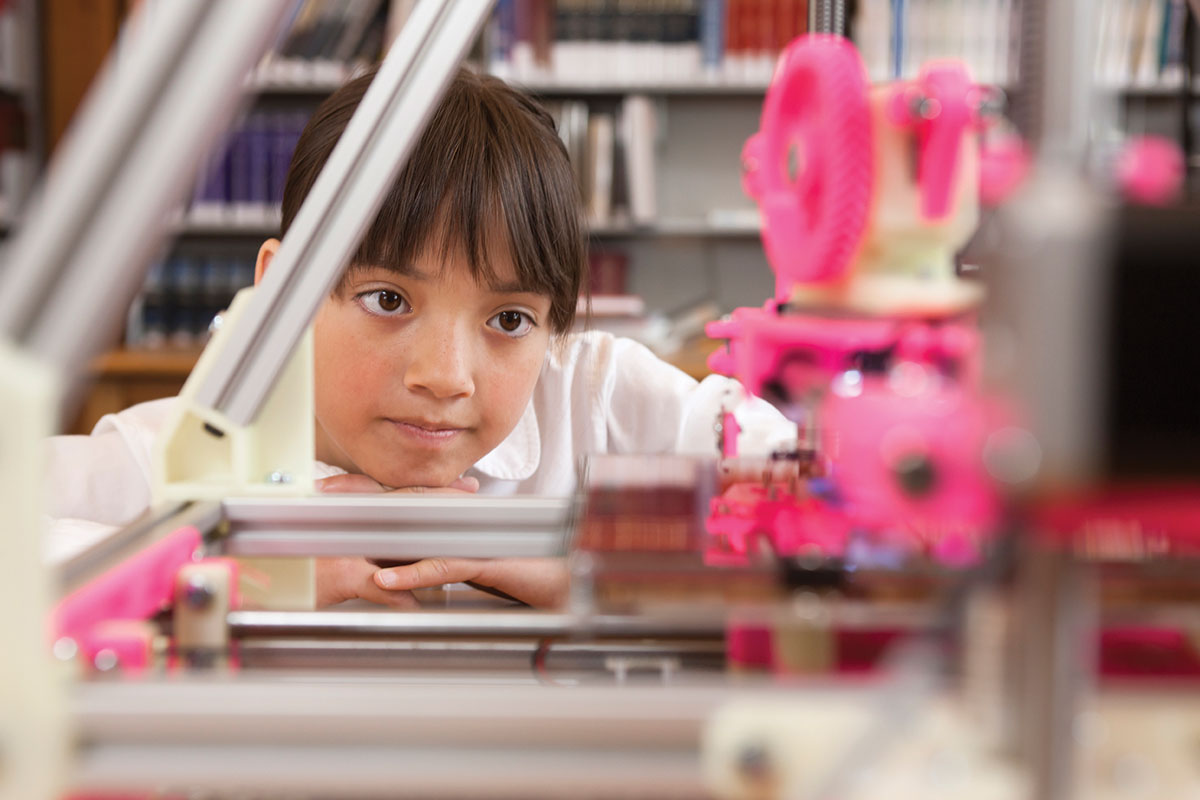
At Technology Access Foundation (TAF) Academy, technology and tools come together to turn ideas into reality. Beyond meeting education standards, learning here leaps off the pages of theory to take shape as real, three-dimensional products and prototypes.
Each day, with the help of a specialized on-site lab, students work on technology and engineering projects such as jewelry inspired by flowers and peacocks, stairs that produce energy with each step taken and even apps that hold politicians accountable for their commitments.
It’s these real products that motivate the students to push a little harder, says student Gurleen Bassi, a senior at TAF, which is focused on science, technology, engineering and math (STEM) and serves students in sixth–12th grades.
“You can actually see what you could achieve if you try a little bit harder,” she says. For example, at first Bassi tried to avoid computer coding. But there came a time when she could see coding would significantly improve her project.
“The desire to make it better encouraged me to try coding,” she says.
Some of the projects Bassi has developed at TAF include a farm project that involved a blueprint and specific animal-stall positioning. She also created a jewelry neckpiece that was inspired by a peacock, and a computer application that analyzes how much water a family wastes.
Tyler Tetzloff, who created the energy-producing stairs, says that biology and humanities are often taught through science fiction books such as I, Robot, Jurassic Park and Frankenstein.
“We analyze how those books correlate to real-life issues,” he says.
TAF Academy is part of a movement taking place around the country and in the Puget Sound region that brings real-world problems to students through the use of science, technology, engineering and math. Students are challenged to find solutions via project-based learning, often with the help of 3-D printers, STEM labs and specialized equipment.
TAF, part of Federal Way Public Schools, has 350 students. Most began attending TAF in sixth grade. Interested students apply; if there are more applicants than openings, students are selected randomly through a drawing. The school has a 95 percent graduation rate and a 100 percent college acceptance rate.
Lorenzo Scott, a 2015 graduate who started at the University of Washington, Tacoma this fall, began attending TAF in sixth grade. One of 20 graduating seniors this spring, Scott says the small school community is part of the appeal, as is the project-based learning and one-to-one laptop availability.
The beauty in this type of learning is that it’s not just a theory, says Paul Tytler, TAF Academy principal. The students apply their learning to issues they care about.
Scott, for example, is passionate about political accountability. So he created an app that tracks a politician’s accountability.
“The projects are something they’ve developed themselves, so they are more motivated to go over the next hurdle,” Tytler says. That’s where the richest learning takes place.
TAF boasts a STEM lab, called The Lighthouse, which features 3-D printers, computer-assisted design capabilities, a laser cutter, hand tools, microscopes for DNA barcoding and multimedia production capabilities.
The lab, which opened this spring and was created in part through by a sponsorship from Seattle’s Wimmer Solutions, is called The Lighthouse because “it’s where bright ideas come to life,” says Gabriel Bello-Diaz, an engineering instructor at TAF.
Bello-Diaz has a background in architectural engineering. His company, Efficio, creates fashion and art through hand-crafted and digital techniques. He brings his professional expertise into The Lighthouse and encourages his students to bring their ideas to life through the use of technology.
With the combination of coding and tools, Bello-Diaz’s students take on projects such as solar panels that move with the sun and water analysis. He sees students extract ideas from nature, use coding to design art and then use tools to do the final fabrication.
Bello-Diaz has even taken some students a step further into the business world, where they are able to create art and sell their pieces. Scott recently sold his first piece of jewelry for $65.
“I’m passionate about bringing the use of technology to the next generation,” Bello-Diaz says. “Every kid should have access to a computer so they have a smooth and easy transition into the workforce.”
Karl Ruff, a Roosevelt High School teacher in Seattle who specializes in the STEM field, touts the benefits of STEM-based learning.
He says the new STEM lab trend is bringing engineering and tools back into the classroom, but with a technological twist.
“There’s a saying: ‘This isn’t your dad’s workshop,’” says Ruff, who was named Puget Sound Engineering Council Teacher of the Year for 2015.
Ruff worked at Boeing for 16 years in the engineering department. His real-world experience gives him insight into what his students need to learn in preparation for their high-tech futures. His STEM lab in Roosevelt High School has a robot, mill, 3-D printers and tools.
Patrick D’Amelio, CEO of Washington STEM, a nonprofit dedicated to advancing STEM education in the state, adds that demand is also pushing the trend of STEM labs in schools.
“It’s no secret that Puget Sound’s job market increasingly requires STEM skills,” he says. “We are no. 3 in the concentration of STEM jobs in the nation, yet only 7 percent of schools have access to computer science education.”
D’Amelio is optimistic that the trend will be sustained. He cites the fact that the Washington State Legislature funded a K–12 STEM capital grants program that prioritizes high-need schools in the 2015–2017 budget.
“Washington STEM envisions a future where every student in Washington has access to high-quality STEM education,” he says.
We aren’t there yet. Parents of students who don’t attend a STEM-focused school or take classes at a site that boasts a 3-D printer or engineering lab are, increasingly, desiring those opportunities at their own neighborhood schools.
Uma Rao, director of development and communications for TAF, says this type of learning needs to become more prevalent. The goal is to make labs, STEM teachers and project-based learning available to more students, she says.
“It’s not about an achievement gap, it’s about an opportunity gap,” Rao says. “Students need an opportunity to learn about STEM, and that’s what we are not seeing [enough of] in public education.”



